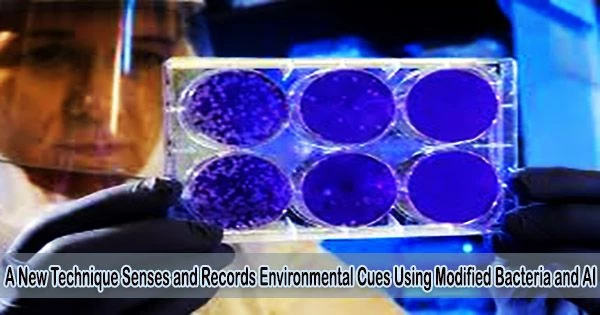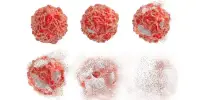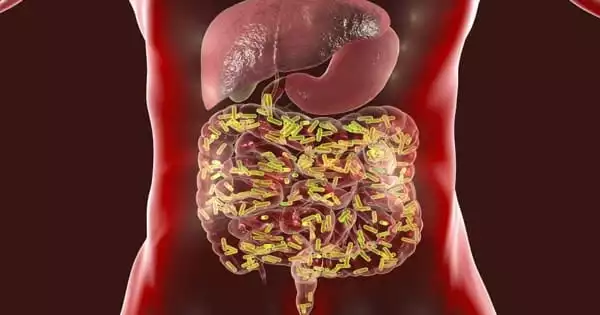Several years ago, scientists in Professor Tal Danino’s lab of biomedical engineering were discussing how they could create and utilize naturally pattern-forming microorganisms. Numerous bacterium species, including Proteus mirabilis (P. mirabilis), self-organize on solid surfaces into distinct patterns that are apparent to the unaided eye.
These bacteria are able to detect a variety of environmental cues and react to them by “swarming,” which is a highly organized and quick movement of bacteria propelled by their flagella, a long, tail-like feature that gives them a whip-like motion.
Danino’s team at Columbia Engineering, which has a lot of experience utilizing synthetic biology techniques to alter bacteria, looked for inspiration by discussing where else they might discover comparable patterns in nature and what their purposes might be. They were inspired to use P. mirabilis rings as a recording system after observing how tree rings capture information about tree age and climate history.
Additionally, they were interested in using AI to describe the distinctive characteristics of bacterial colony patterns; they later recognized that same method might also be used to interpret constructed patterns.
“This seemed to us to be an untapped opportunity to create a natural recording system for specific cues,” said Danino, a member of Columbia’s Data Science Institute (DSI).
In a new study, published in Nature Chemical Biology, the researchers worked with P. mirabilis, commonly found in the soil and water and occasionally the human gut, known for its bullseye-appearing colony patterns.
Our goal is to develop this system as a low-cost detection and recording system for conditions such as pollutants and toxic compounds in the environment. To our knowledge, this work is the first study where a naturally pattern-forming bacterial species has been engineered by synthetic biologists to modify its native swarming ability and function as a sensor.
Anjali Doshi
When bacteria are cultured on a solid growth medium Petri plate, they cycle between bacterial growth phases that produce visible dense rings and bacterial movement, known as “swarming” movement, that spreads the colony outward.
The team modified the bacteria by adding what synthetic biologists refer to as “genetic circuits” systems of genetic components that are rationally assembled to cause the bacterium to behave in a particular manner.
The altered bacteria responded by altering their swarming ability, which clearly changed the output pattern, when they detected the presence of the researchers’ chosen input, which could be anything from temperature to sugar molecules to heavy metals like mercury and copper.
Working with Andrew Laine, Percy K. and Vida L. W. Hudson Professor of Biomedical Engineering and a DSI member and Jia Guo, assistant professor of neurobiology (in psychiatry) at the Columbia University Irving Medical Center the researchers then applied deep learning a state-of-the-art AI technique to decode the environment from the pattern, in the same way scientists look at the rings in a tree trunk to understand the history of its environment.
They employed models that can categorize patterns holistically in order to forecast things like sugar concentration in a sample and models that can outline or “segment” edges within a pattern in order to forecast things like how frequently the temperature varied as the colony expanded.
Working with P. mirabilis has the benefit that, in contrast to many of the conventional manufactured bacterial designs, the natural P. mirabilis pattern can be seen with the unaided eye without the use of expensive visualization equipment and develops on a robust, practical solid agar medium.
These characteristics boost the system’s potential for use as a sensor readout in a range of contexts. Researchers can get knowledge about input molecule concentrations from extremely complicated patterns by applying deep learning to interpret the patterns.
“Our goal is to develop this system as a low-cost detection and recording system for conditions such as pollutants and toxic compounds in the environment,” said Anjali Doshi, the study’s lead author and a recent Ph.D. graduate from Danino’s lab. “To our knowledge, this work is the first study where a naturally pattern-forming bacterial species has been engineered by synthetic biologists to modify its native swarming ability and function as a sensor.”
Such research can further our understanding of the formation of native patterns and, beyond that, advance biotechnology in areas other than sensor development. In addition to assisting with the Danino lab’s parallel goal of engineering bacteria to be living “smart” therapeutics, being able to control bacteria as a group rather than as individuals and control their movement and organization in a colony could help researchers build living materials at larger scales.
This work expands the foundation for engineering emergent microbial behaviour by presenting a novel method for creating macroscale bacterial recorders. The team then intends to improve their system by modifying the bacteria to detect a larger variety of toxins and pollutants and switching to secure “probiotic” microorganisms. Ultimately, they aim to develop a device to apply the recording system outside of the lab.
















